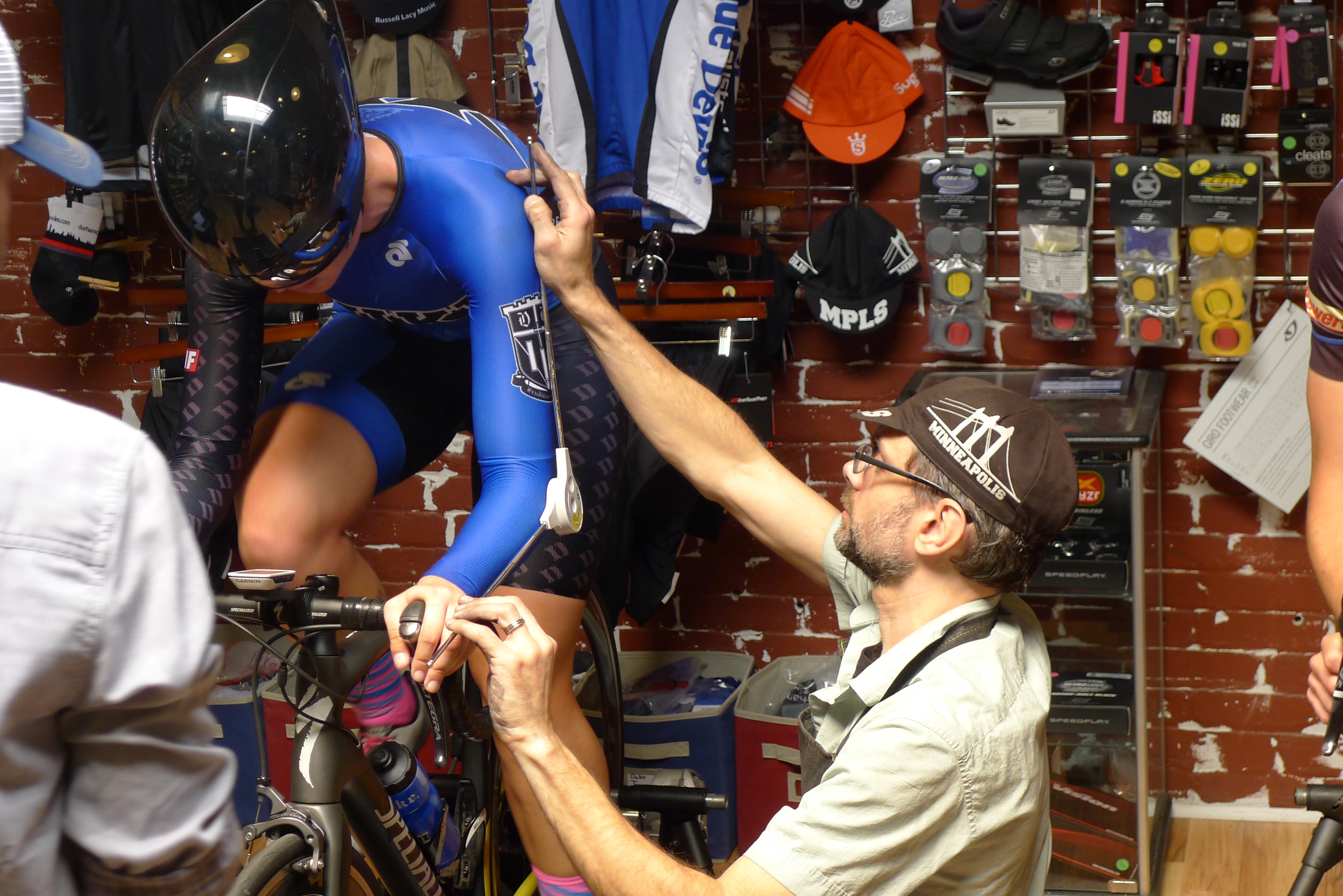As a fitter, I’m often asked, “Who really needs a custom bike”? Over the last 20 years, I’d estimate that no more than 5% of the riders I’ve fit need something custom in order to have a bike that will be comfortable and handle well. Perhaps another 5-10% may get a noticeably better fit and ride out of a custom bike, but can likely be happy enough on a stock frame. These numbers can increase significantly if you’re in a subgroup that isn’t well served by the bicycle industry. If you’re particularly tall or short, for instance, or if you have reduced flexibility or mobility issues, you are unlikely to find an off-the-shelf bike that will work particularly well. Yet, even if you’re not among the small percentage of riders who truly need a custom frame, there are lots of benefits to going custom. Let’s consider a few of the compromises necessary with mass produced bikes:
(1) Any off-the-shelf bike needs to work for a 100lb rider or a 300lb rider; for a sprinter or a climber. In order to withstand the worse case abuse by heavy and powerful riders, all production bikes are essentially overbuilt and are too laterally and vertically stiff for most mid-sized and smaller riders. This actually becomes increasingly true on more expensive, high-modulus carbon frames, which typically sacrifice all compliance for weight reduction.
(2) Bottom brackets on most mass produced bikes are too high. Manufacturers increase bottom bracket height to reduce the likelihood of striking a pedal when leaning deep into corners, but very few riders need bikes that can be pedaled while at extreme cornering angles and most riders would prefer the stability of a low bottom bracket. In fact, prior to the advent of carbon bikes, which are made in expensive molds (limiting the number of frame variations a manufacturer can produce), some manufacturers had bikes with higher bottom brackets for American style “crit racing” and bikes with lower bottom brackets for stability on fast, winding, European style descents.
(3) Off-the-self bikes are designed to eliminate “toe-overlap” – the phenomenon of a rider’s toe hitting the front wheel when making sharp turns at very slow speeds. (At higher speeds, you turn by leaning, not by turning the handlebars.) Until you become accustomed to it, toe-overlap may indeed cause a low speed spill in the parking lot before your ride. In order to reduce toe-overlap, however, manufacturers increase fork “rake” (the forward curvature of the fork blades), which can make handling unstable at speed, which is arguably more dangerous than toe overlap.
(4) Manufacturers choose materials that have marketing value, but don’t necessarily produce the best ride quality. The strength to weight ratio of carbon fiber is phenomenal and because the material can be formed in molds, it is easy for manufacturers to produce distinctive looking bikes at marketable low weights. Materials such as steel, titanium, and carbon/titanium blends, may weigh a few grams more and have a more traditional look, but generally have a far more supple and responsive ride. (Of course, with smart component specifications, you can build a custom bike as light or lighter than an off-the-shelf bike. We’ve built some gorgeous, feather-light machines.)
Despite the above compromises, the quality and performance of modern production bikes is remarkable and remains a sensible choice for most riders; yet, there are elements of a hand-crafted bike, built specifically for an individual, that just can’t be replicated with an off-the-shelf product and there are plenty of good arguments for getting a custom bike other than “needing one.”
